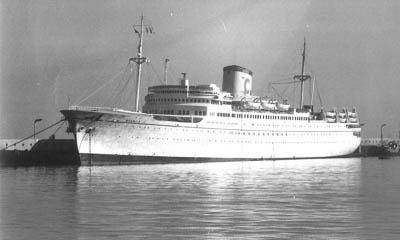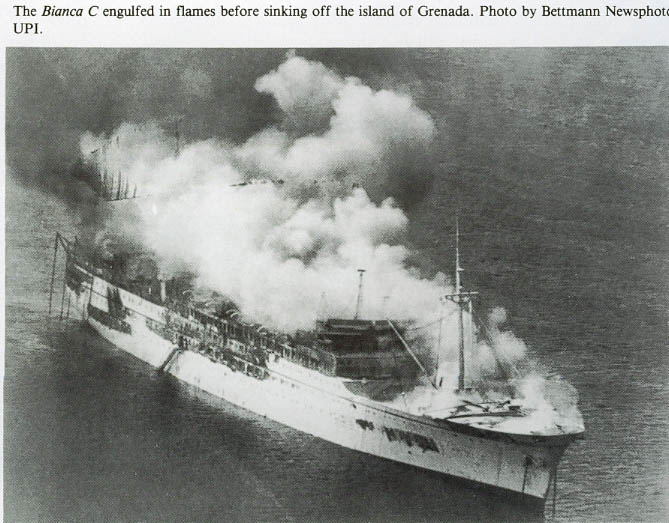Jill Heinerth, an underwater photographer, shares the story of how she shot this iconic image of the Bianca C. shipwreck during a Caribbean scuba dive.
Bianca C., a passenger ship that sank on two occasions, the first time before it was completed in France, and the second time after the Grenada Island explosion and fire. Bianca C. was registered at 18,427 tonnes, had a length of 600 feet (180 m) and a capacity of 400 passengers with a crew of 300.
Bianca C. first launched in June 1944 under the name Marechal Petain, was built during World War II at Construction Navales La Ciotat, a shipyard on the southern coast of France. Construction had not yet been completed, so the vessel was towed to Port de Bouc, near Marseille, where in August the Germans scuttled her. It was renamed La Marseillaise when the hull was raised and towed to Toulon before being returned to La Ciotat to be renovated as a cruise ship.
In 1957, after being sold to Panama’s Arosa Line, the ship was given the name Arosa Sky. She was upgraded again and became the flagship of the company. The American Field Service exchange organization chartered her to bring students between the U.S. and Europe. Within two years, Arosa Line was forced to sell the ship to Costa Line, an Italian company.
The ship was renamed the Bianca C. after that 1959 sale for one of the daughters of the owner and was refurbished again. Bianca C.’s main sailing route included stops in the Caribbean and ran from Italy to Venezuela.

Bianca C. left La Guaira (Venezuela) for Grenada and Tenerife (Canary Islands) on the afternoon of October 21, 2020. While docked in Grenada, in the early morning of 22 October 1961, an explosion occurred in the engine room and one man was killed instantly and eight others were injured. Around 700 passengers and crew scrambled to leave the ship as fires broke out, while Grenadian fishermen and boat owners, awakened by the noise of the explosion, rushed to help near St. George’s harbour. Because Grenada did not have the equipment to quench such a large fire, the British frigate HMS Londonderry in Puerto Rico was radioed to assist but it took two days for it to arrive, and by then the Bianca C. started to sink.
It was decided to tow it out of there by the Londonderry because the Bianca C was blocking the harbour entrance, While towing the Bianca C. it began to list to the port side. Thousands of Grenadians watched from the mountains as the tow progressed for six hours, with a movement of only 3 miles. To add another glitch, a squall started and the towline broke, sinking the Bianca C. quickly into 165 feet (50 m) of water about a mile from the popular tourist beach at Grand Anse.

A Trinidadian company salvaged the propellers of the Bianca C. in the 1970s and sold them for scrap. Since the top of the ship is in only about 100 feet ( 30 m) of water, it can be reached by scuba divers and some parts of the boat were removed for souvenirs in the late 1980s and early 1990s. It is still the biggest shipwreck in the region at 600 feet in length and called by the Times as one of the world’s top ten sites for wreck diving.
YouTube video: Jill Heinerth





